29 apr 2018
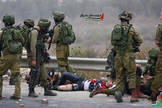
Israeli occupation forces (IOF) on Sunday evening announced killing of three Palestinians and arresting a fourth man, in two separate attacks, at the pretext of attempting to cross the security fence south of Gaza Strip.
The IOF claimed that the Palestinians managed to cross the separation fence and throw bombs at IOF troopers who immediately shot them dead.
Local sources reported hearing shooting and seeing light bombers, coming from the Israeli side, east of Rafah and Khan Younis. No further information were reported yet.
Israeli military kills three Palestinians along Gaza Strip border
Palestinians say Israel has used excessive force, as its use of live fire has drawn international criticism
Israeli troops shot and killed three Palestinians along the border with the Gaza Strip in two separate incidents on Sunday, the Israeli military said.
The shootings follow a month of violence along the Israel-Gaza border, where Palestinians have been holding protests every Friday pressing for the right of return for refugees and their descendants to what is now Israel.
In the first incident on Sunday, two men "attempted to infiltrate" into Israel from the southern Gaza Strip, the military said in a statement. Soldiers shot and killed one of the men, and the other was wounded and held for questioning.
In the second incident, the army said two militants who managed to cross the fence "hurled explosive devices" at Israeli soldiers, who shot them dead. There was no claim of responsibility from any militant group in Gaza.
Israel has refused any right of return for Palestinians who were expelled or fled and became refugees when the state of Israel was established in 1948 - in what Palestinians refer to as the Nakba (the catastrophe) - fearing that it would lose its Jewish majority.
The Palestinians say Israel has used excessive force, and its use of live fire has drawn international criticism.
Israel says that it is defending its sovereign border, including nearby communities, and that its troops target only instigators. Israel accuses Hamas, which is sworn to Israel’s destruction, of trying to carry out attacks under the guise of the mass protests.
There was no immediate comment from Hamas in Gaza.
Israeli forces have killed 42 Palestinians since protests began on 30 March and about 2,000 have been wounded by gunfire. No serious casualties have been reported on the Israeli side.
The Gaza Health Ministry said that three Palestinians were also killed on Friday and 200 were wounded by Israeli gunfire, while a fourth died of his wounds on Saturday.
The IOF claimed that the Palestinians managed to cross the separation fence and throw bombs at IOF troopers who immediately shot them dead.
Local sources reported hearing shooting and seeing light bombers, coming from the Israeli side, east of Rafah and Khan Younis. No further information were reported yet.
Israeli military kills three Palestinians along Gaza Strip border
Palestinians say Israel has used excessive force, as its use of live fire has drawn international criticism
Israeli troops shot and killed three Palestinians along the border with the Gaza Strip in two separate incidents on Sunday, the Israeli military said.
The shootings follow a month of violence along the Israel-Gaza border, where Palestinians have been holding protests every Friday pressing for the right of return for refugees and their descendants to what is now Israel.
In the first incident on Sunday, two men "attempted to infiltrate" into Israel from the southern Gaza Strip, the military said in a statement. Soldiers shot and killed one of the men, and the other was wounded and held for questioning.
In the second incident, the army said two militants who managed to cross the fence "hurled explosive devices" at Israeli soldiers, who shot them dead. There was no claim of responsibility from any militant group in Gaza.
Israel has refused any right of return for Palestinians who were expelled or fled and became refugees when the state of Israel was established in 1948 - in what Palestinians refer to as the Nakba (the catastrophe) - fearing that it would lose its Jewish majority.
The Palestinians say Israel has used excessive force, and its use of live fire has drawn international criticism.
Israel says that it is defending its sovereign border, including nearby communities, and that its troops target only instigators. Israel accuses Hamas, which is sworn to Israel’s destruction, of trying to carry out attacks under the guise of the mass protests.
There was no immediate comment from Hamas in Gaza.
Israeli forces have killed 42 Palestinians since protests began on 30 March and about 2,000 have been wounded by gunfire. No serious casualties have been reported on the Israeli side.
The Gaza Health Ministry said that three Palestinians were also killed on Friday and 200 were wounded by Israeli gunfire, while a fourth died of his wounds on Saturday.
|
|
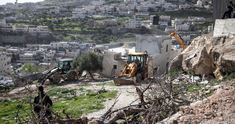
Israel is carrying out murderous assaults against protesting Palestinians, with its armed forces killing and maiming demonstrators who pose no imminent threat to them, Amnesty International said on Friday.
Based on its latest research, the famous rights group said, Israel continues killing and maiming protesters as the “Great March of Return” protests continued in the Gaza Strip. The Israeli military has killed 44 Palestinians and injured more than 6,122 others – some with what appear to be deliberately inflicted life-changing |
injuries – during the weekly Friday protests that began on 30 March.
Amnesty International has renewed its call on governments worldwide to impose a comprehensive arms embargo on Israel following the country’s disproportionate response to mass demonstrations along the fence that separates the Gaza Strip from Israel.
“For four weeks the world has watched in horror as Israeli snipers and other soldiers, in full-protective gear and behind the fence, have attacked Palestinian protesters with live ammunition and tear gas,” Deputy Regional Director for the Middle East and North Africa at Amnesty International Magdalena Mughrabi said.
“Despite wide international condemnation, the Israeli army has not reversed its illegal orders to shoot unarmed protesters,” she added.
“The time for symbolic statements of condemnation is now over. The international community must act concretely and stop the delivery of arms and military equipment to Israel.
“A failure to do so will continue to fuel serious human rights abuses against thousands of men, women and children suffering the consequences of life under Israel’s cruel blockade of Gaza.
“These people are merely protesting their unbearable conditions and demanding the right to return to their homes and towns in what is now Israel.”
The USA is by far Israel’s main supplier of military equipment and technology, with a commitment to provide $38 billion in military aid over the next 10 years.
But other countries, including EU member states such as France, Germany, the UK and Italy, have licensed large volumes of military equipment for Israel.
Protesters shot from behind
In most of the fatal cases analysed by Amnesty International victims were shot in the upper body, including the head and the chest, some from behind.
Eyewitness testimonies, video and photographic evidence suggest that many were deliberately killed or injured while posing no immediate threat to the Israeli soldiers.
Among the victims are 23-year-old football player Mohammad Khalil Obeid, who was shot in both knees as he filmed himself with his back towards the border fence at a protest east of al-Breij Camp on 30 March.
The video, published on social media, shows the moment he was shot. In the footage, he appears to be standing in an isolated area, far from the fence, and not seeming to pose any threat to the lives of Israeli soldiers. He is currently in need of a knee replacement operation to be able to walk again.
“As a Palestinian player my life has been destroyed… I was dreaming of playing football abroad, and to raise the Palestinian flag abroad [to show] that we are not terrorists,” he told Amnesty International.
“We wanted to convey our message to all organizations, countries and heads of states so that they see what is happening to us, because no one would accept this anywhere in the world.”
Injuries not seen since the war
Doctors at the European and Shifa hospitals in Gaza City told Amnesty International that many of the serious injuries they have witnessed are to the lower limbs, including the knees, which are typical of war wounds that they have not observed since the 2014 Gaza conflict.
Many have suffered extreme bone and tissue damage, as well as large exit wounds measuring between 10 and 15mm, and will likely face further complications, infections and some form of physical disability, such as paralysis or amputation. Reports of the high number of injuries to the knees, which increase the probability of bullet fragmentation, are particularly disturbing. If true, they would suggest that the Israeli army is intentionally intending to inflict life-changing injuries.
Doctors also said that they have observed another type of devastating injury characterized by large internal cavities, plastic left inside the body but no exit wounds.
According to military experts as well as a forensic pathologist who reviewed photographs of injuries obtained by Amnesty International, many of the wounds observed by doctors in Gaza are consistent with those caused by high-velocity Israeli-manufactured Tavor rifles using 5.56mm military ammunition. Other wounds bear the hallmarks of US-manufactured M24 Remington sniper rifles shooting 7.62mm hunting ammunition, which expand and mushroom inside the body.
According to a recent statement by Médecins Sans Frontières, half of the over 500 patients admitted to its clinics were treated for injuries “where the bullet has literally destroyed tissue after having pulverized the bone”. This information has been confirmed by humanitarian NGOs as well as testimonies collected from doctors by Palestinian human rights groups in Gaza.
“The nature of these injuries shows that Israeli soldiers are using high-velocity military weapons designed to cause maximum harm to Palestinian protesters that do not pose imminent threat to them. These apparently deliberate attempts to kill and main are deeply disturbing, not to mention completely illegal. Some of these cases appear to amount to wilful killing, a grave breach of the Geneva Conventions and a war crime,” said Magdalena Mughrabi.
“Unless Israel ensures effective and independent investigations resulting in criminal prosecutions of those responsible, the International Criminal Court must open a formal investigation into these killings and serious injuries as possible war crimes and ensure that perpetrators are brought to justice.”
According to the Ministry of Health in Gaza, as of 26 April, the total number of injured is estimated at 5,511 – 592 children, 192 women and 4,727 men – with 1,738 injuries from live ammunition. Approximately half of those admitted to hospitals suffered injuries to the legs and the knees, while 225 sustained injuries to the neck and head, 142 others were shot in the abdomen and pelvis, and 115 were injured in the chest and the back. So far, the injuries have resulted in 18 amputations.
Four children aged between 14 and 17 are among those killed due to injuries sustained during protests. Two journalists have also been shot dead, despite both wearing protective vests that clearly identified them as members of the press, while several others have been injured.
Gaza’s hospitals have struggled to cope with the large number of casualties due to shortages in medical supplies, electricity and fuel caused by the Israeli blockade and exacerbated by the intra-Palestinian divide. Meanwhile, Israel has been delaying or refusing the transfer of some patients in need of urgent specialized medical treatment available in other parts of the Occupied Palestinian Territories due to their participation in protests.
In one case documented by Amnesty International, 20-year-old journalist Yousef al-Kronz had his left leg amputated after the Israeli authorities denied him permission to travel to Ramallah in the occupied West Bank for urgent medical treatment. He was eventually allowed to leave for an operation to save his other leg following legal intervention by human rights groups.
Paramedics in Gaza have told Amnesty International of difficulties evacuating injured protesters due to the Israeli army firing tear gas canisters at them as well as near field hospitals.
Unlawful killings and life-changing injuries
The organizers of the “Great March of Return” have repeatedly stated that the protests are intended to be peaceful, and they have largely involved sit-ins, concerts, sports games, speeches and other peaceful activities.
Despite this, the Israeli army reinforced its forces – deploying tanks, military vehicles, soldiers and snipers along the Gaza fence – and gave orders to shoot anyone within several hundred metres of the fence.
While some protesters have attempted to approach the fence, threw stones in the direction of Israeli soldiers or burnt tyres, social media videos, as well as eyewitness testimonies gathered by Amnesty International, Palestinian and Israeli human rights groups, show that Israeli soldiers shot unarmed protesters, bystanders, journalists and medical staff approximately 150-400m from the fence, where they did not pose any threat.
In a petition requesting that the Israeli Supreme Court order the Israeli army to stop using live ammunition to disperse protests, human rights groups Adalah and Al Mezan provided evidence of 12 videos [PDF] published on social media showing unarmed protesters, including women and children, being shot by the Israeli army. In some cases, people were shot while waving the Palestinian flag or running away from the fence.
Video footage widely circulated on social media shows Abd Al-Fattah Abd Al-Nabi, aged 19, being shot on 30 March as he was running away from the fence while holding a tyre, with his back turned to Israeli soldiers. He was shot in the back of the head and died. On Friday 20 April, 14-year-old Mohammad Ayyoub was also killed by a gunshot wound to the back of the head.
More than a decade-long siege
Over the last 11 years, civilians in the Gaza Strip have suffered the devastating consequences of Israel’s illegal blockade in addition to three wars.
As a result, Gaza’s economy has sharply declined, leaving its population almost entirely dependent on international aid. Gaza now has one of the highest unemployment rates in the world at 44%. Four years since the 2014 conflict, some 22,000 people remain displaced.
In January 2015, the Office of the Prosecutor of the International Criminal Court opened a preliminary examination of situation in the Occupied Palestinian Territories, specifically looking into allegations of crimes committed since 13 June 2014.
Amnesty International has also been calling on all states to impose a comprehensive arms embargo on Israel, as well as on Palestinian armed groups, with the aim of preventing violations of international humanitarian and human rights law by all sides.
Since 30 March, in addition to the protesters, seven other Palestinians have been killed by Israeli air strikes, artillery fire or live ammunition, including a farmer who was harvesting his land near the fence, and six members of Palestinian armed groups.
~Amnesty International/Days of Palestine
Amnesty International has renewed its call on governments worldwide to impose a comprehensive arms embargo on Israel following the country’s disproportionate response to mass demonstrations along the fence that separates the Gaza Strip from Israel.
“For four weeks the world has watched in horror as Israeli snipers and other soldiers, in full-protective gear and behind the fence, have attacked Palestinian protesters with live ammunition and tear gas,” Deputy Regional Director for the Middle East and North Africa at Amnesty International Magdalena Mughrabi said.
“Despite wide international condemnation, the Israeli army has not reversed its illegal orders to shoot unarmed protesters,” she added.
“The time for symbolic statements of condemnation is now over. The international community must act concretely and stop the delivery of arms and military equipment to Israel.
“A failure to do so will continue to fuel serious human rights abuses against thousands of men, women and children suffering the consequences of life under Israel’s cruel blockade of Gaza.
“These people are merely protesting their unbearable conditions and demanding the right to return to their homes and towns in what is now Israel.”
The USA is by far Israel’s main supplier of military equipment and technology, with a commitment to provide $38 billion in military aid over the next 10 years.
But other countries, including EU member states such as France, Germany, the UK and Italy, have licensed large volumes of military equipment for Israel.
Protesters shot from behind
In most of the fatal cases analysed by Amnesty International victims were shot in the upper body, including the head and the chest, some from behind.
Eyewitness testimonies, video and photographic evidence suggest that many were deliberately killed or injured while posing no immediate threat to the Israeli soldiers.
Among the victims are 23-year-old football player Mohammad Khalil Obeid, who was shot in both knees as he filmed himself with his back towards the border fence at a protest east of al-Breij Camp on 30 March.
The video, published on social media, shows the moment he was shot. In the footage, he appears to be standing in an isolated area, far from the fence, and not seeming to pose any threat to the lives of Israeli soldiers. He is currently in need of a knee replacement operation to be able to walk again.
“As a Palestinian player my life has been destroyed… I was dreaming of playing football abroad, and to raise the Palestinian flag abroad [to show] that we are not terrorists,” he told Amnesty International.
“We wanted to convey our message to all organizations, countries and heads of states so that they see what is happening to us, because no one would accept this anywhere in the world.”
Injuries not seen since the war
Doctors at the European and Shifa hospitals in Gaza City told Amnesty International that many of the serious injuries they have witnessed are to the lower limbs, including the knees, which are typical of war wounds that they have not observed since the 2014 Gaza conflict.
Many have suffered extreme bone and tissue damage, as well as large exit wounds measuring between 10 and 15mm, and will likely face further complications, infections and some form of physical disability, such as paralysis or amputation. Reports of the high number of injuries to the knees, which increase the probability of bullet fragmentation, are particularly disturbing. If true, they would suggest that the Israeli army is intentionally intending to inflict life-changing injuries.
Doctors also said that they have observed another type of devastating injury characterized by large internal cavities, plastic left inside the body but no exit wounds.
According to military experts as well as a forensic pathologist who reviewed photographs of injuries obtained by Amnesty International, many of the wounds observed by doctors in Gaza are consistent with those caused by high-velocity Israeli-manufactured Tavor rifles using 5.56mm military ammunition. Other wounds bear the hallmarks of US-manufactured M24 Remington sniper rifles shooting 7.62mm hunting ammunition, which expand and mushroom inside the body.
According to a recent statement by Médecins Sans Frontières, half of the over 500 patients admitted to its clinics were treated for injuries “where the bullet has literally destroyed tissue after having pulverized the bone”. This information has been confirmed by humanitarian NGOs as well as testimonies collected from doctors by Palestinian human rights groups in Gaza.
“The nature of these injuries shows that Israeli soldiers are using high-velocity military weapons designed to cause maximum harm to Palestinian protesters that do not pose imminent threat to them. These apparently deliberate attempts to kill and main are deeply disturbing, not to mention completely illegal. Some of these cases appear to amount to wilful killing, a grave breach of the Geneva Conventions and a war crime,” said Magdalena Mughrabi.
“Unless Israel ensures effective and independent investigations resulting in criminal prosecutions of those responsible, the International Criminal Court must open a formal investigation into these killings and serious injuries as possible war crimes and ensure that perpetrators are brought to justice.”
According to the Ministry of Health in Gaza, as of 26 April, the total number of injured is estimated at 5,511 – 592 children, 192 women and 4,727 men – with 1,738 injuries from live ammunition. Approximately half of those admitted to hospitals suffered injuries to the legs and the knees, while 225 sustained injuries to the neck and head, 142 others were shot in the abdomen and pelvis, and 115 were injured in the chest and the back. So far, the injuries have resulted in 18 amputations.
Four children aged between 14 and 17 are among those killed due to injuries sustained during protests. Two journalists have also been shot dead, despite both wearing protective vests that clearly identified them as members of the press, while several others have been injured.
Gaza’s hospitals have struggled to cope with the large number of casualties due to shortages in medical supplies, electricity and fuel caused by the Israeli blockade and exacerbated by the intra-Palestinian divide. Meanwhile, Israel has been delaying or refusing the transfer of some patients in need of urgent specialized medical treatment available in other parts of the Occupied Palestinian Territories due to their participation in protests.
In one case documented by Amnesty International, 20-year-old journalist Yousef al-Kronz had his left leg amputated after the Israeli authorities denied him permission to travel to Ramallah in the occupied West Bank for urgent medical treatment. He was eventually allowed to leave for an operation to save his other leg following legal intervention by human rights groups.
Paramedics in Gaza have told Amnesty International of difficulties evacuating injured protesters due to the Israeli army firing tear gas canisters at them as well as near field hospitals.
Unlawful killings and life-changing injuries
The organizers of the “Great March of Return” have repeatedly stated that the protests are intended to be peaceful, and they have largely involved sit-ins, concerts, sports games, speeches and other peaceful activities.
Despite this, the Israeli army reinforced its forces – deploying tanks, military vehicles, soldiers and snipers along the Gaza fence – and gave orders to shoot anyone within several hundred metres of the fence.
While some protesters have attempted to approach the fence, threw stones in the direction of Israeli soldiers or burnt tyres, social media videos, as well as eyewitness testimonies gathered by Amnesty International, Palestinian and Israeli human rights groups, show that Israeli soldiers shot unarmed protesters, bystanders, journalists and medical staff approximately 150-400m from the fence, where they did not pose any threat.
In a petition requesting that the Israeli Supreme Court order the Israeli army to stop using live ammunition to disperse protests, human rights groups Adalah and Al Mezan provided evidence of 12 videos [PDF] published on social media showing unarmed protesters, including women and children, being shot by the Israeli army. In some cases, people were shot while waving the Palestinian flag or running away from the fence.
Video footage widely circulated on social media shows Abd Al-Fattah Abd Al-Nabi, aged 19, being shot on 30 March as he was running away from the fence while holding a tyre, with his back turned to Israeli soldiers. He was shot in the back of the head and died. On Friday 20 April, 14-year-old Mohammad Ayyoub was also killed by a gunshot wound to the back of the head.
More than a decade-long siege
Over the last 11 years, civilians in the Gaza Strip have suffered the devastating consequences of Israel’s illegal blockade in addition to three wars.
As a result, Gaza’s economy has sharply declined, leaving its population almost entirely dependent on international aid. Gaza now has one of the highest unemployment rates in the world at 44%. Four years since the 2014 conflict, some 22,000 people remain displaced.
In January 2015, the Office of the Prosecutor of the International Criminal Court opened a preliminary examination of situation in the Occupied Palestinian Territories, specifically looking into allegations of crimes committed since 13 June 2014.
Amnesty International has also been calling on all states to impose a comprehensive arms embargo on Israel, as well as on Palestinian armed groups, with the aim of preventing violations of international humanitarian and human rights law by all sides.
Since 30 March, in addition to the protesters, seven other Palestinians have been killed by Israeli air strikes, artillery fire or live ammunition, including a farmer who was harvesting his land near the fence, and six members of Palestinian armed groups.
~Amnesty International/Days of Palestine
28 apr 2018
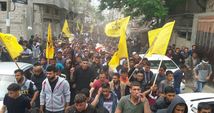
Palestinian crowds in Khan Younis on Saturday bade farewell to two martyrs, Azzam Uwaiada, 15, and Abdusalam Baker, 33.
Uwaida and Baker were killed by Israeli forces during their participation in the peaceful marches of return in Khuzaa east of Khan Younis.
The participants in the funeral procession chanted slogans calling for revenge, and insisting on the Palestinians' right of return.
Uwaida and Baker were killed by Israeli forces during their participation in the peaceful marches of return in Khuzaa east of Khan Younis.
The participants in the funeral procession chanted slogans calling for revenge, and insisting on the Palestinians' right of return.
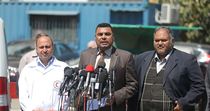
Gaza's Ministry of Health on Saturday warned that it is suffering from an unprecedented medical deficit.
Spokesman for the Ministry Ashraf al-Qedra said that the Ministry is facing the biggest drug shortage in 11 years after Gaza hospitals and medical centers have run out of 50% of essential drugs and medical supplies especially those related to emergencies.
Al-Qedra explained that this is the result of the Israeli violent targeting of peaceful protesters in the Great March of Return.
So far 46 Palestinians have been killed and over 7,000 injured, some of whom seriously, after being deliberately targeted by Israeli gunfire while taking part in the Great March of Return near Gaza's eastern border.
Spokesman for the Ministry Ashraf al-Qedra said that the Ministry is facing the biggest drug shortage in 11 years after Gaza hospitals and medical centers have run out of 50% of essential drugs and medical supplies especially those related to emergencies.
Al-Qedra explained that this is the result of the Israeli violent targeting of peaceful protesters in the Great March of Return.
So far 46 Palestinians have been killed and over 7,000 injured, some of whom seriously, after being deliberately targeted by Israeli gunfire while taking part in the Great March of Return near Gaza's eastern border.
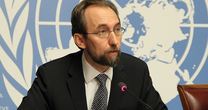
With over 40 Palestinians killed and more than 5,500 injured during protests in Gaza over the past month, many by live ammunition, the top UN human rights official on Friday called on Israel to ensure that its soldiers refrain from using excessive force against protesters.
“Every week, we witness instances of use of lethal force against unarmed demonstrators,” Zeid Ra’ad al-Hussein, the UN High Commissioner for Human Rights, said in a press release Friday.
“Warnings by the UN and others have seemingly gone unheeded, as the approach of the [Israeli] security forces from week to week does not seem to have changed.”
According to the High Commissioner’s Office, 35 of those killed were taking part in the ‘Great March of Return’ demonstrations. Most of them appear to have been unarmed or not presenting an imminent threat to Israeli soldiers at the time of their killing or injury. 1,739 individuals were injured by Israeli live fire.
“The loss of life is deplorable, and the staggering number of injuries caused by live ammunition only confirms the sense that excessive force has been used against demonstrators – not once, not twice, but repeatedly,” the High Commissioner added.
Also concerning is that over the last four weeks of protest, four children were shot dead by Israeli forces, three of them by a bullet to the head or neck. A further 233 were injured by live ammunition, with some sustaining injuries that will result in lifelong disabilities, including through the amputation of limbs, according to the news release.
“The use of excessive force against any demonstrator is reprehensible, but children enjoy additional protection under international law,” Zeid said.
“It is difficult to see how children, even those throwing stones, can present a threat of imminent death or serious injury to heavily protected security force personnel […] Images of a child being shot as he runs away from Israeli security forces are downright shocking.”
His press release noted that a 14-year-old boy, Mohammad Ayyoub, was killed by a bullet to the head on 20 April.
“It is difficult to see how tire-burning or stone-throwing, or even Molotov-cocktails thrown from a significant distance at heavily protected security forces in defensive positions can be seen to constitute such threat,” the news release read further.
High Commissioner Zeid also underscored the obligation of every country to ensure that all loss of life and serious injury are investigated and those responsible held to account. Any investigations into the events in Gaza “must fulfill this purpose,” he stressed.
He also voiced concern that continued lack of accountability could lead to future human rights violations regarding protests.
“By the end of today, next Friday, and the Friday after that, more unarmed Palestinians who were alive this morning will have been killed, simply because, while exercising their right to protest, they approached a fence, or otherwise attracted the attention of the soldiers on the other side,” the UN official said.
He underlined that Israel’s failure to consistently prosecute violations committed by members of soldiers would encourage them to persist in using deadly force against other human beings, even when they present no threat.
“Every week, we witness instances of use of lethal force against unarmed demonstrators,” Zeid Ra’ad al-Hussein, the UN High Commissioner for Human Rights, said in a press release Friday.
“Warnings by the UN and others have seemingly gone unheeded, as the approach of the [Israeli] security forces from week to week does not seem to have changed.”
According to the High Commissioner’s Office, 35 of those killed were taking part in the ‘Great March of Return’ demonstrations. Most of them appear to have been unarmed or not presenting an imminent threat to Israeli soldiers at the time of their killing or injury. 1,739 individuals were injured by Israeli live fire.
“The loss of life is deplorable, and the staggering number of injuries caused by live ammunition only confirms the sense that excessive force has been used against demonstrators – not once, not twice, but repeatedly,” the High Commissioner added.
Also concerning is that over the last four weeks of protest, four children were shot dead by Israeli forces, three of them by a bullet to the head or neck. A further 233 were injured by live ammunition, with some sustaining injuries that will result in lifelong disabilities, including through the amputation of limbs, according to the news release.
“The use of excessive force against any demonstrator is reprehensible, but children enjoy additional protection under international law,” Zeid said.
“It is difficult to see how children, even those throwing stones, can present a threat of imminent death or serious injury to heavily protected security force personnel […] Images of a child being shot as he runs away from Israeli security forces are downright shocking.”
His press release noted that a 14-year-old boy, Mohammad Ayyoub, was killed by a bullet to the head on 20 April.
“It is difficult to see how tire-burning or stone-throwing, or even Molotov-cocktails thrown from a significant distance at heavily protected security forces in defensive positions can be seen to constitute such threat,” the news release read further.
High Commissioner Zeid also underscored the obligation of every country to ensure that all loss of life and serious injury are investigated and those responsible held to account. Any investigations into the events in Gaza “must fulfill this purpose,” he stressed.
He also voiced concern that continued lack of accountability could lead to future human rights violations regarding protests.
“By the end of today, next Friday, and the Friday after that, more unarmed Palestinians who were alive this morning will have been killed, simply because, while exercising their right to protest, they approached a fence, or otherwise attracted the attention of the soldiers on the other side,” the UN official said.
He underlined that Israel’s failure to consistently prosecute violations committed by members of soldiers would encourage them to persist in using deadly force against other human beings, even when they present no threat.
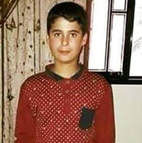
Azzam Oweida 15
A Palestinian child died at dawn Saturday from wounds he sustained after being shot by the Israeli occupation forces while participating in the peaceful Great March of Return east of Khan Younis in the southern Gaza Strip on Friday.
Medical sources said that the 15-year-old Azzam Oweida died from a serious injury in the head raising the number of Friday's martyrs to four.
On Friday three Palestinians were killed and 955 injured after being attacked by the Israeli forces with live ammunition and teargas canisters during the "Friday of Rebellious Youth" protests along Gaza's eastern border.
The three martyrs were identified as Abdulsalam Baker, 29, Mohammed al-Muqayyad, 21, and Khalil Atallah, 22.
The number of the Palestinian protesters killed by Israeli gunfire since the launch of the Great March of Return on 30th March has increased to 46.
A Palestinian child died at dawn Saturday from wounds he sustained after being shot by the Israeli occupation forces while participating in the peaceful Great March of Return east of Khan Younis in the southern Gaza Strip on Friday.
Medical sources said that the 15-year-old Azzam Oweida died from a serious injury in the head raising the number of Friday's martyrs to four.
On Friday three Palestinians were killed and 955 injured after being attacked by the Israeli forces with live ammunition and teargas canisters during the "Friday of Rebellious Youth" protests along Gaza's eastern border.
The three martyrs were identified as Abdulsalam Baker, 29, Mohammed al-Muqayyad, 21, and Khalil Atallah, 22.
The number of the Palestinian protesters killed by Israeli gunfire since the launch of the Great March of Return on 30th March has increased to 46.
